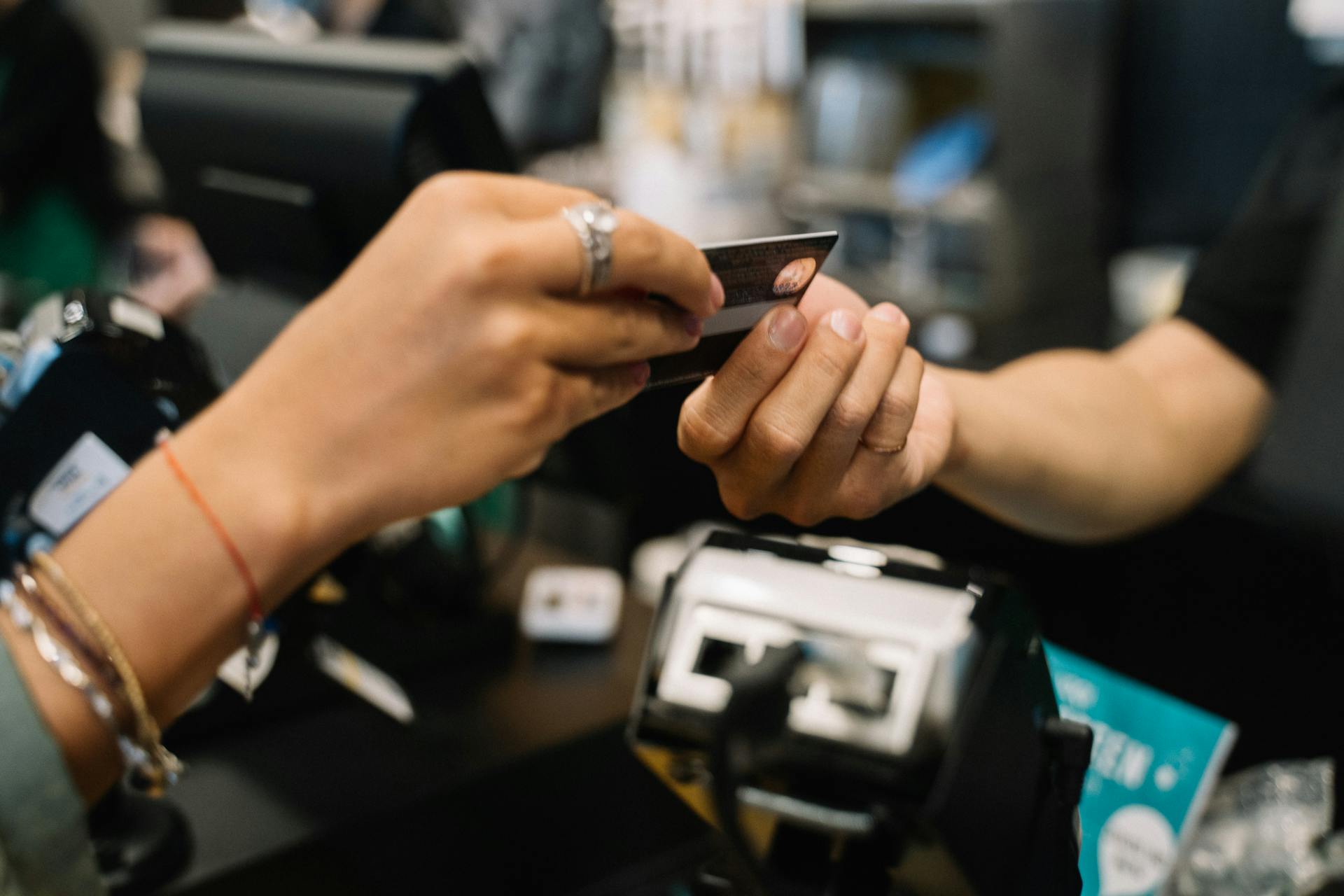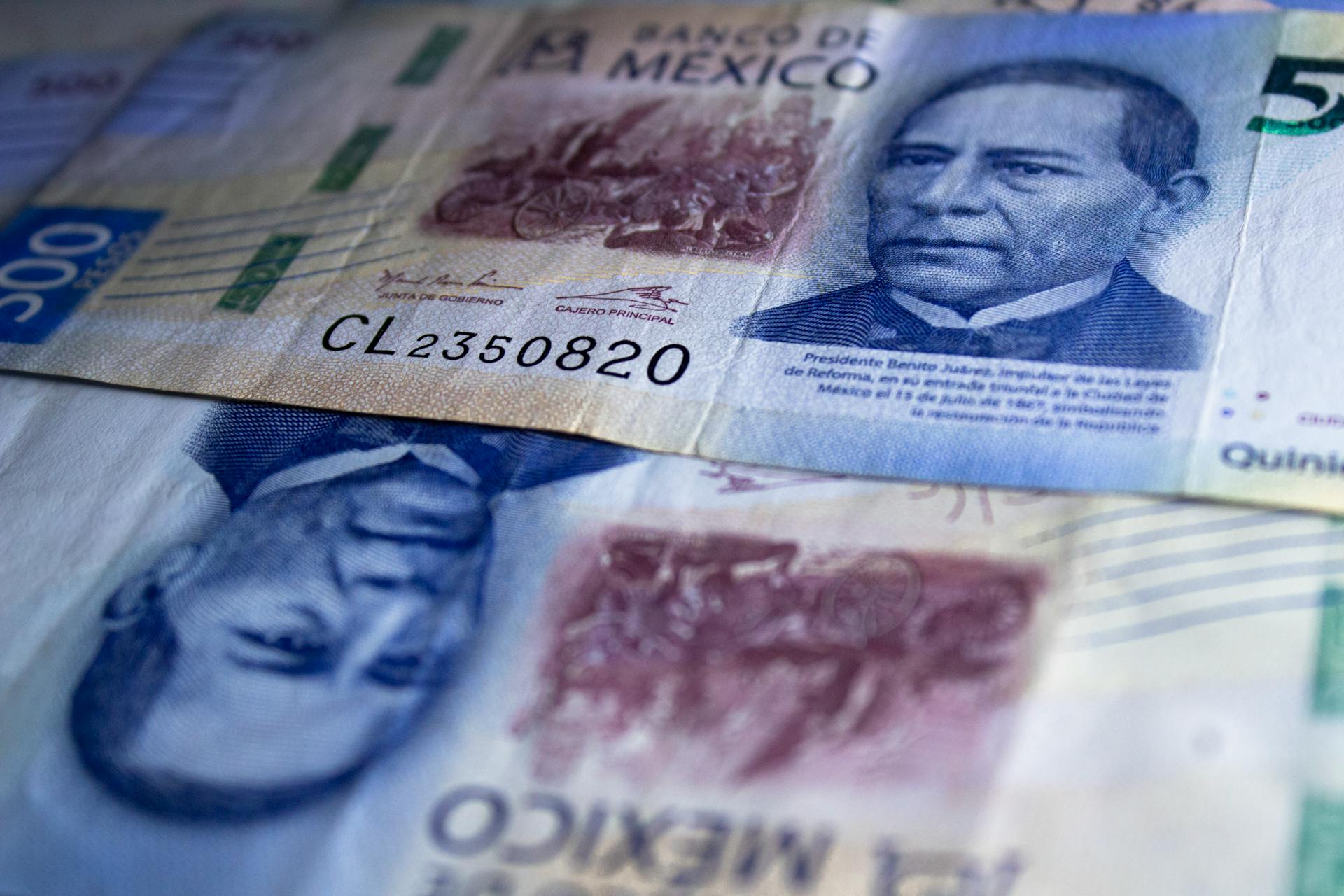
CLABE, or Clave Bancaria Estandarizada, is a standardized bank code used in Mexico to identify banks and their branches. It's a crucial piece of information for international transactions and money transfers.
A CLABE code consists of 18 digits, divided into three parts: the bank's identification number, the branch's identification number, and the account number. This structure helps ensure accuracy and efficiency in transactions.
In Mexico, CLABE codes are used by all banks, and they're usually found on bank statements, checks, and other financial documents. You can also find your CLABE code on your bank's website or by contacting their customer service.
A unique perspective: List of Banks in Mexico
What is CLABE?
CLABE, or Clave Bancaria Estandarizada, is a standardized banking code established in Mexico on June 1, 2004.
It's a unique number assigned to each bank account, making it a crucial tool for secure and accurate bank transfers.
CLABE is a norm of numeration for Mexican bank accounts, ensuring that transfers are applied exclusively to the intended account.
It's used as a guarantee that our transactions are received by the desired recipient, serving as a personal identification for banking transactions.
The CLABE number is a set of numbers that identifies bank accounts, generally checking accounts, and facilitates electronic transfers between banks.
This standardized code ensures the accuracy and security of bank transfers, avoiding errors and simplifying the process of sending and receiving money.
Components of CLABE
The CLABE is a standardized key used for interbank transfers in Mexico, and it's composed of 18 digits. Each digit plays a crucial role in ensuring the security and efficiency of transactions.
The first three digits are the bank code, which identifies the bank where the account is held. This code is assigned by the Association of Mexican Banks (ABM).
The next three digits are the branch office code, which corresponds to the city or region where the client maintains their account. This code is defined by the catalog of plazas.
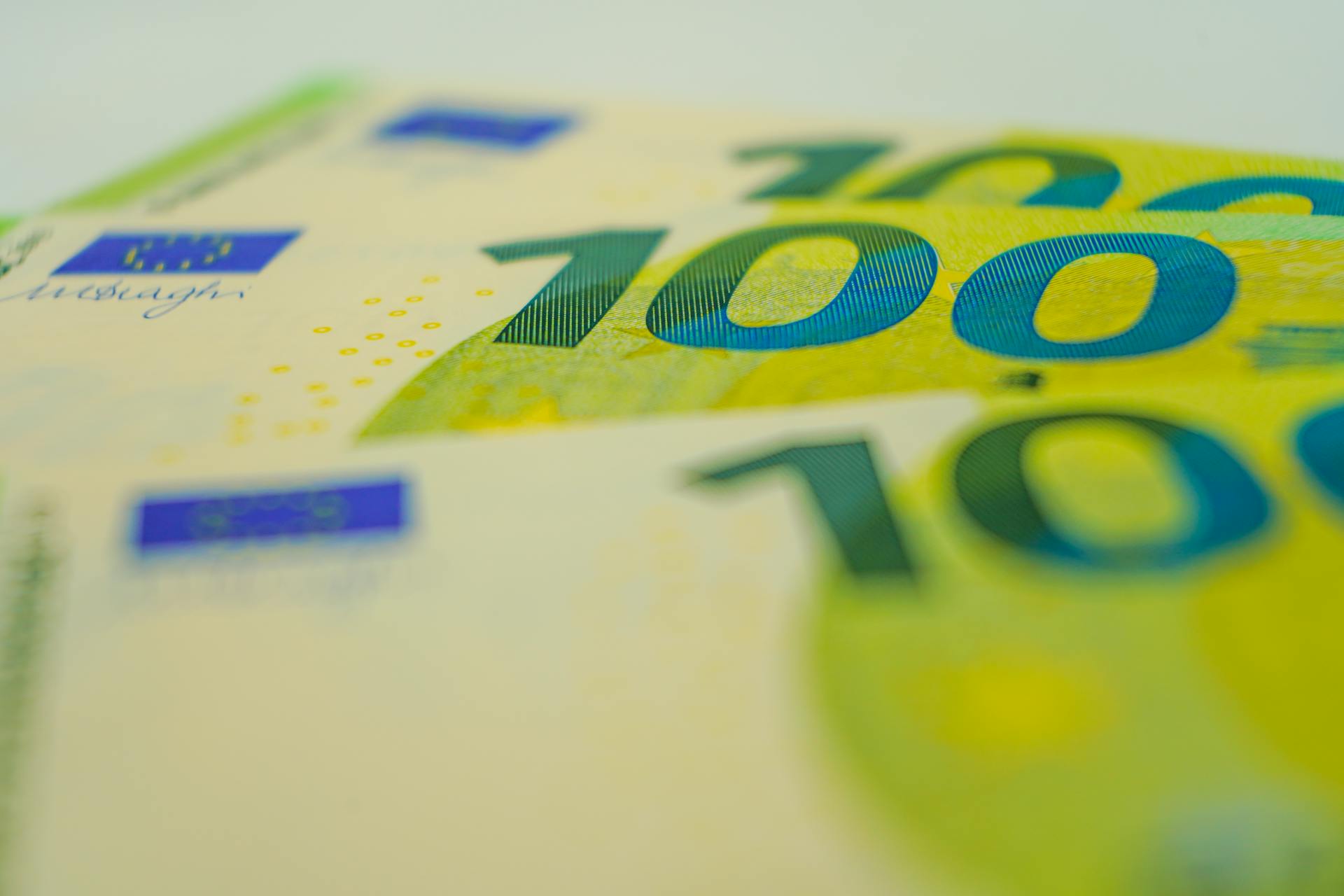
The 11-digit third section is the account number, which is used for both sending and receiving interbank transfers. This number is unique to each account and is used to identify the account within the bank.
The final digit is the control digit, which validates the structure of the CLABE and ensures that the previous 17 digits are correct. This digit is obtained through an algorithm that checks the bank code, branch office code, and account number.
Here's a breakdown of the CLABE composition:
This composition is crucial for ensuring the security and efficiency of interbank transfers in Mexico.
Getting and Using CLABE
To get your CLABE, you'll need to have a savings or salary account with a bank, as they only provide the CLABE for these types of accounts. If you have another type of account, you won't be able to request one.
You can find your CLABE in your account statement, typically in the top right corner, along with your account number, RFC, and other details. Some banks also make it easy to find your CLABE through their online banking or mobile app.
For your interest: Where Can I Find My Credit Card Account Number
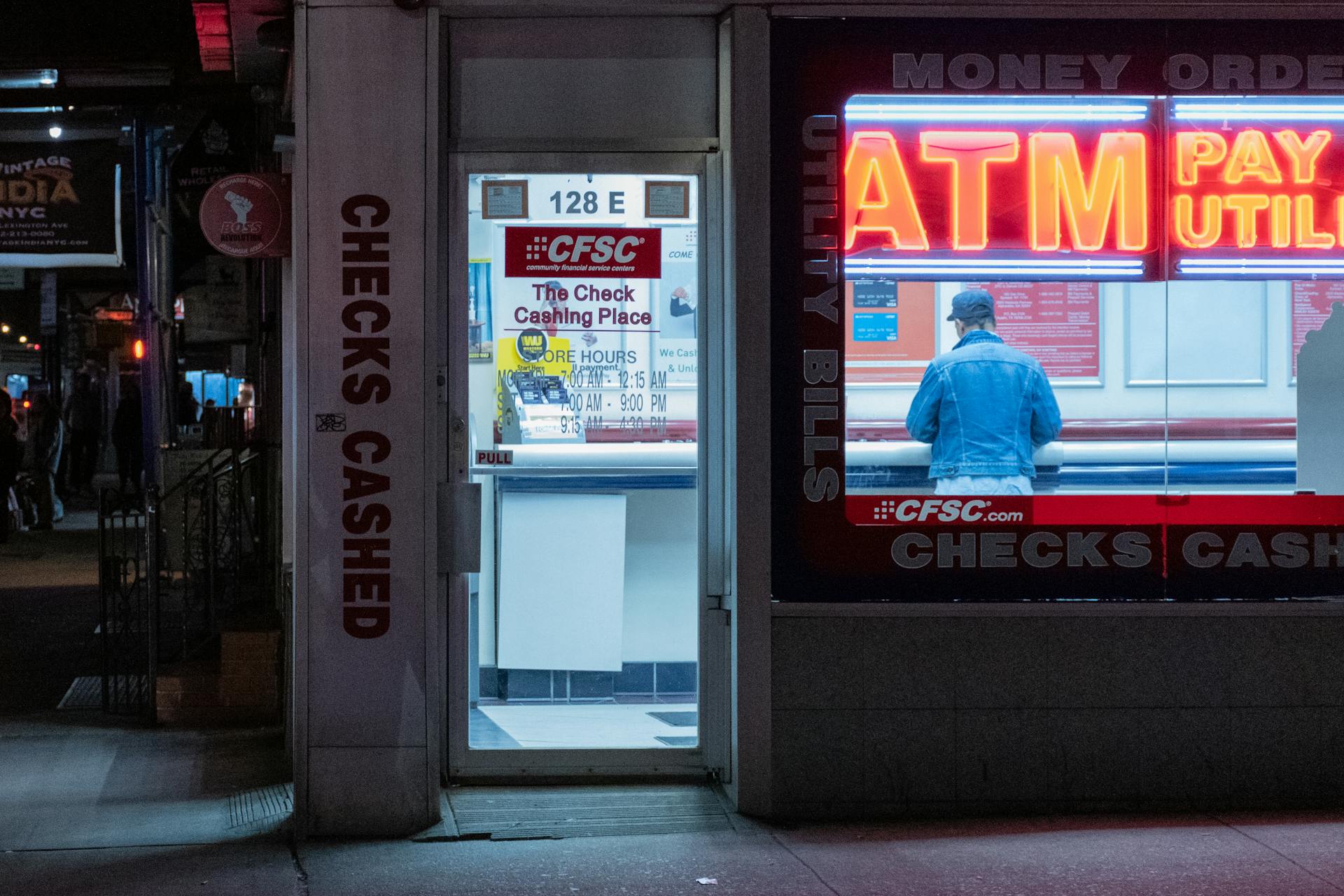
If you're having trouble finding your CLABE, you can check your contract with the bank, which should have the necessary information. Alternatively, you can visit a bank branch and ask for the CLABE, or use an ATM if your bank offers this service.
It's worth noting that you can also contact your bank's customer service to get your CLABE, and they'll guide you through the process.
Here are some common ways to find your CLABE:
- Account statement: Check the top right corner for your CLABE, account number, RFC, and other details.
- Online banking or mobile app: Look for the option to view your account data.
- Contract: Check the contract you signed with the bank for your account information.
- Cash machine: Some banks let you find your CLABE using their ATMs.
- Customer service: Contact your bank's customer service to get your CLABE.
Once you have your CLABE, you can use it to send or receive interbank deposits, pay bills, and even automate income and returns.
Bank Information
In Mexico, banking institutions are identified by a three-digit number assigned by the ABM. This code is used to identify the bank and is an essential part of the CLABE number.
The CLABE number is composed of 18 digits, which are divided into four sections: the bank code, the plaza code, the account number, and the control digit. The bank code is the first three digits and is assigned by the ABM.
You can find your interbank CLABE number on your bank statement, in your online banking session, or by contacting your bank's customer service. It's also included in your bank contract when you open the account.
Here's a breakdown of the CLABE number:
Código de Banco
In Mexico, banking institutions are identified by a three-digit number assigned by the ABM, which stands for Asociación de Bancos de México. This code is also known as the bank code.
The ABM code or bank code is the first three digits of your CLABE, which is a 18-digit number that identifies your bank account. The CLABE is composed of four sections: the bank code, the location code, the account number, and the control digit.
Here are the 10 largest banks in Mexico and their ABM codes:
You can check your bank code by looking at your CLABE number, which is usually provided by your bank on official documentation or in your online banking portal.
RFC Number in Mexico: Definition
In Mexico, a unique identification number is required for financial transactions, and that number is called the RFC number.
The RFC number, short for Registro Federal de Contribuyentes, is a 13-digit Mexican tax identification number issued by the Mexican Tax Administration Service.
For individuals, the RFC number is made up of letters and numbers, with the first 4 digits taken from their name.
The remaining 9 digits are a combination of numbers and check digits that ensure the number's authenticity.
Account Information
Your bank account in Mexico has a unique CLABE number, which is required for sending and receiving money between accounts.
You can find your CLABE number on official documentation from your bank, such as a bank statement or in your online banking portal.
If you can't find it anywhere, give your bank a call to ask for your CLABE number.
Here are some ways to find your CLABE number:
- Check your bank statement.
- Look at your bank contract.
- Access your online banking session.
- Visit your nearest branch and speak with an agent.
- Contact your bank's customer service.
Alternatively, you can check your number online with a CLABE validator.
Account Number vs Card Number
When you're dealing with your bank account, you might come across terms like Account Number and Card Number. Let's break them down.
An Account Number is used only for internal transactions and usually consists of 10 digits. This helps identify accounts within the same financial institution.
To make online or telephone purchases, you'll need a Card Number, which comes with 16 numbers on the front and three digits printed on the back.
Here's a quick comparison of the two:
Account Number
An account number is a unique identifier for your bank account, and it's used for internal transactions within the same financial institution. It's usually padded with zeroes on the left to a width of 11 digits.
In Mexico, account numbers are used for internal transactions and are generally composed of 10 digits. This helps identify accounts within the same bank.
You can find your account number on your bank statement, in your bank contract, or by accessing your online banking session. Some banks also include it in their mobile app.
Here are the common uses of account numbers:
- Internal transactions
- Identifying accounts within the same bank
In Mexico, the account number is also known as the "CLABE number" when it's used for interbank transfers.
Dígito Control
The dígito control is a crucial part of the CLABE, and it's calculated using a specific formula. This formula involves taking the modulus 10 of 10 minus the modulus 10 of the sum of the modulus 10 of the product of the first 17 digits by their weight factor.
To calculate the weight factor, you need to determine the position of each digit in the CLABE, starting from 0, and then apply the modulus 3 operation. The result will be either 0, 1, or 2, which corresponds to a specific weight factor: 3 if the result is 0, 7 if the result is 1, and 1 if the result is 2.
Here's a table showing the weight factors for each position:
Now, let's calculate the dígito control using an example. The first 17 digits of the CLABE are: 0, 3, 2, 1, 8, 0, 0, 0, 0, 1, 1, 8, 3, 5, 9, 7, 1. Multiply each digit by its corresponding weight factor, take the modulus 10 of each product, and sum them up.
The sum of the modulus 10 values is 61. Taking the modulus 10 of this sum gives us 1. Now, subtract 10 from this result to get the dígito control.
Security and Safety
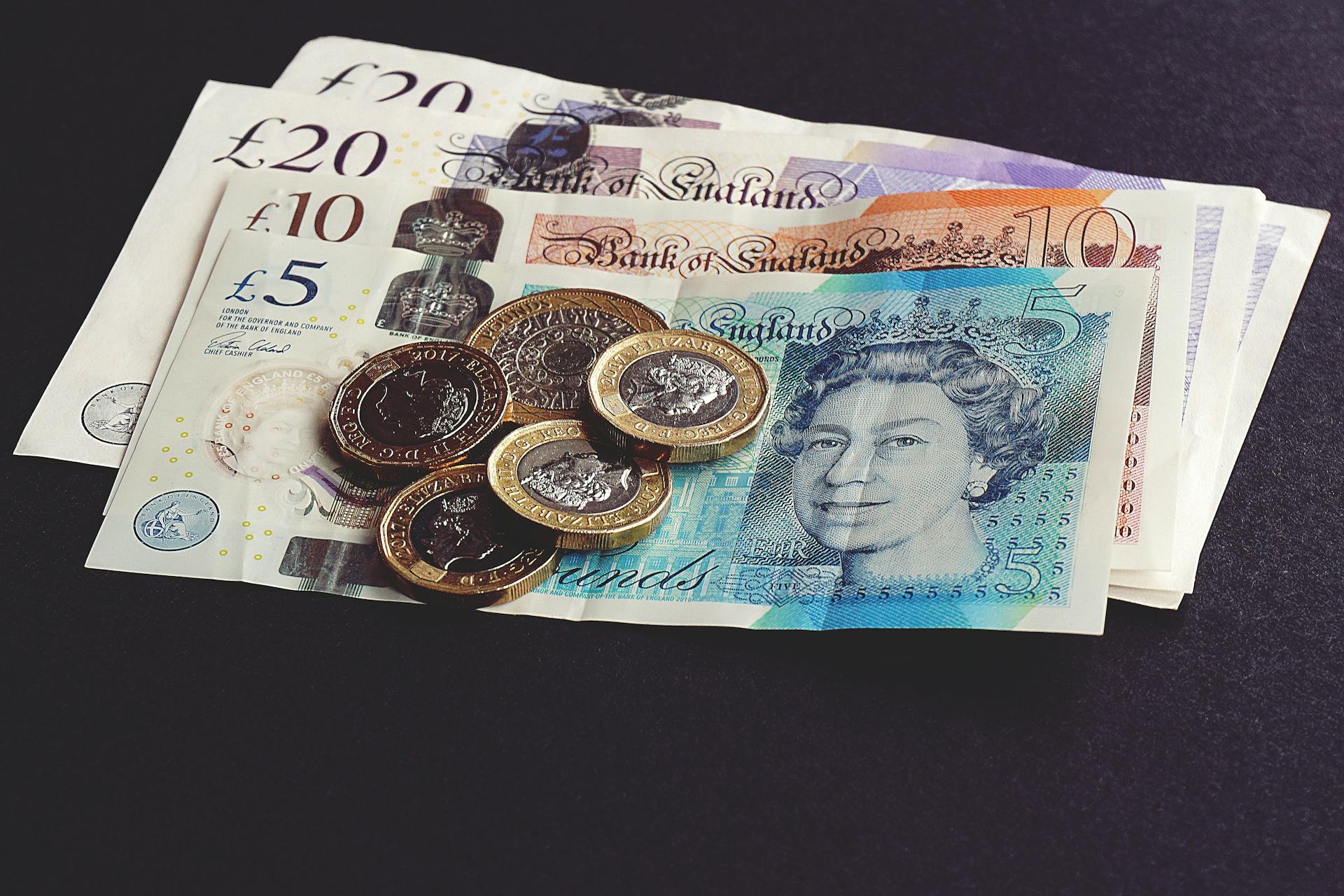
Sharing your CLABE with someone you trust is perfectly safe. You can share it with those who need to send you a transfer without any risk, just like sharing your home address or phone number.
Your CLABE acts as an address, containing the necessary information to carry out electronic transactions, but it doesn't allow third parties to access your account funds unless they make withdrawals.
In Mexico, sharing your CLABE is a common practice designed for this type of process, so you don't need to worry about it being a security risk.
Intriguing read: Lloyds Address by Sort Code
Benefits of the
The CLABE is a standardized key that facilitates the transfer of resources between different banks in Mexico, making the process simpler and more efficient.
One of the main benefits of using the CLABE is that it ensures accurate record-keeping of interbank operations with clients, minimizing potential errors.
The CLABE also standardizes the transfer of resources between banks, reducing the likelihood of rejections due to erroneous or non-existent data.

This key confirms the integrity of the beneficiary's data, not only at the origin bank but also at the receiving bank, providing an added layer of security.
For freelancers, using the CLABE can be particularly useful for receiving payment from clients quickly and safely, as well as making transfers to third parties or paying service providers directly.
Here are some of the key benefits of using the CLABE:
- Accurate Record: Ensures that interbank operations with clients are accurately recorded, minimizing potential errors.
- Standardization: Facilitates the transfer of resources between different banks, simplifying the process.
- Reduction of Rejections: Reduces the likelihood of rejections when transferring money due to erroneous or non-existent data.
- Validation: Confirms the integrity of the beneficiary's data, providing an added layer of security.
By using the CLABE, individuals can reduce errors when making bank transfers, ensuring that the money reaches the correct bank account.
Frequently Asked Questions
What is the IBAN number in Mexico?
In Mexico, the equivalent of an IBAN number is called a CLABE, which is a unique bank account number used for international transactions. CLABE is the standard for numbering bank accounts in Mexico and must be used for international payments.
Do Mexican banks have routing numbers?
Mexican banks use CLABEs, 18-digit numbers that combine account and routing information, instead of traditional routing numbers. To transfer money, you'll need to provide the recipient's CLABE.
Is CLABE the same as routing number?
No, CLABE Numbers and MICR Codes are distinct, with CLABE identifying Mexican bank accounts for fund transfers and MICR Codes used for check processing and branch identification. CLABE is not equivalent to a routing number, but rather a unique account identifier in Mexico.
Is a CLABE the same as a swift code?
No, a CLABE is not the same as a SWIFT code, as it identifies a specific bank account in Mexico, whereas a SWIFT code is a global address for banks and financial institutions. CLABE and SWIFT codes serve different purposes and are used in distinct contexts.
Is a CLABE the same as an account number?
No, a CLABE is not the same as an account number, as it includes additional information such as the bank and branch codes. While it does contain the account number, a CLABE is a more comprehensive identifier for a Mexican bank account.
Featured Images: pexels.com

